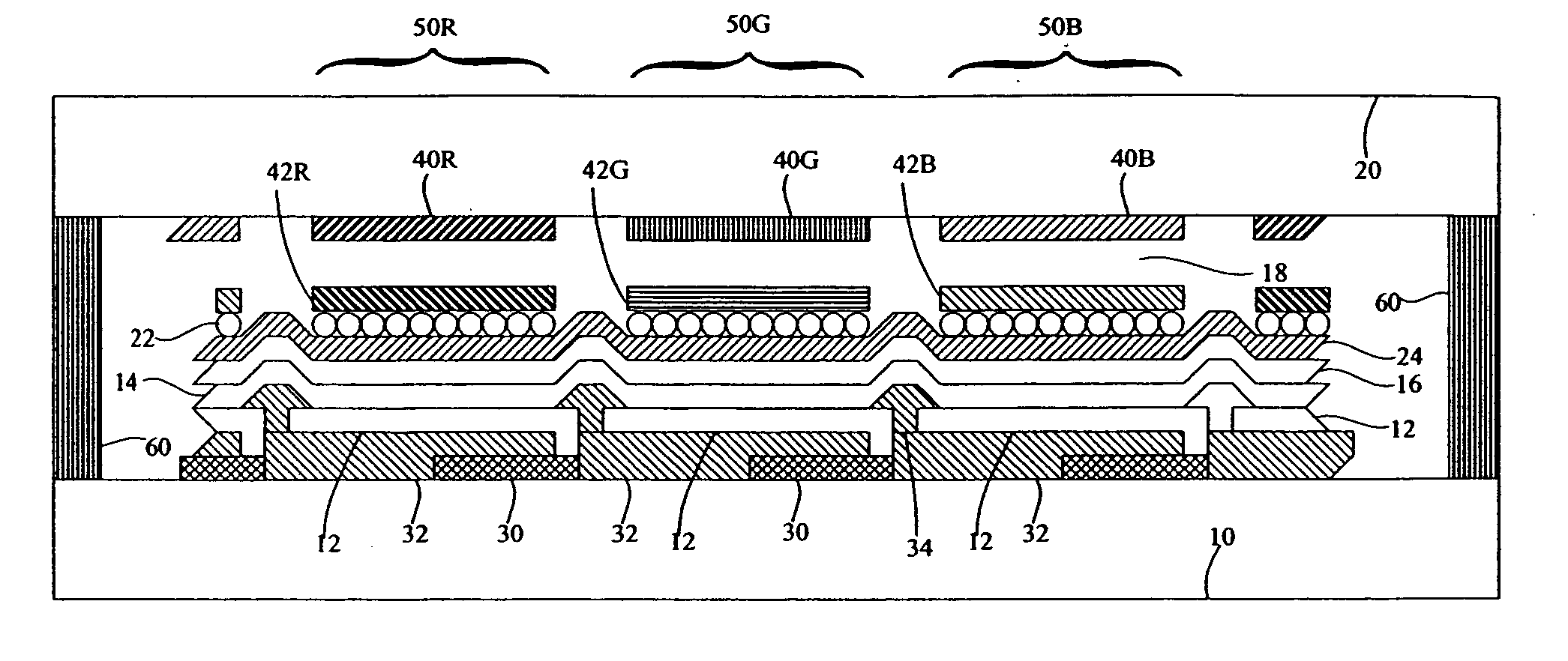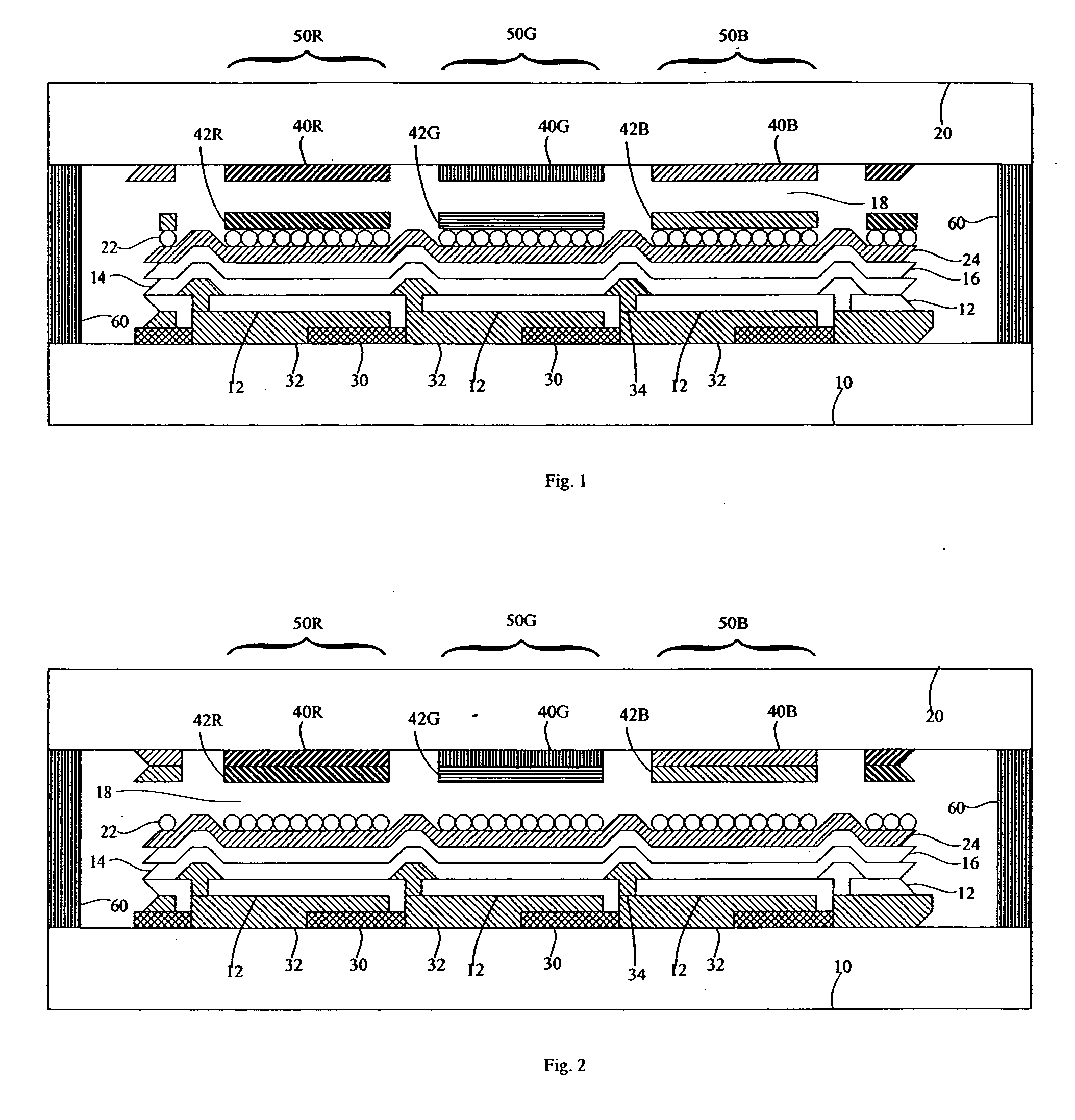Top-emitter OLED device structure and method
- Summary
- Abstract
- Description
- Claims
- Application Information
AI Technical Summary
Benefits of technology
Problems solved by technology
Method used
Image
Examples
Embodiment Construction
[0036] Referring to FIGS. 1 and 2, according to various embodiments of the present invention, a top-emitting OLED device comprises one or more OLEDs formed on a substrate 10, the OLED including a first electrode 12 formed over the substrate 10, one or more layers 14 of light-emitting organic material formed over the first electrode 12, and a transparent second electrode 16 formed over the one or more layers 14 of light-emitting organic material; a light-scattering layer 22 formed over the one or more OLEDs for scattering light emitted by the one or more layers 14 of light-emitting organic material; a transparent cover 20; one or more color filters 40 formed on the transparent cover 20; a color-conversion material layer 42 formed over the color filters 40 (FIG. 2) or the light-scattering layer 22 (FIG. 1); wherein the substrate 10 is aligned and affixed to the transparent cover 20 so that the locations of the color filters 40 and color conversion material 42 correspond to the locatio...
PUM
 Login to View More
Login to View More Abstract
Description
Claims
Application Information
 Login to View More
Login to View More - R&D
- Intellectual Property
- Life Sciences
- Materials
- Tech Scout
- Unparalleled Data Quality
- Higher Quality Content
- 60% Fewer Hallucinations
Browse by: Latest US Patents, China's latest patents, Technical Efficacy Thesaurus, Application Domain, Technology Topic, Popular Technical Reports.
© 2025 PatSnap. All rights reserved.Legal|Privacy policy|Modern Slavery Act Transparency Statement|Sitemap|About US| Contact US: help@patsnap.com



